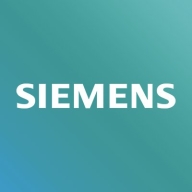Has handled complex assemblies efficiently but has struggled with user guidance and feature accessibilityI struggle to follow all the updates when the product was updated because, for example, in CATIA, when you right-click and select a feature, only one click is needed to see exactly where this feature or geometry is coming from as a command from the product tree. Making this in Siemens NX is more difficult because I should do more clicks, and it is hard to understand for the shading and graphical property, which is not very user-friendly. Modeling itself is easy, and it is quite fast to generate quick models, but when it comes to making changes or following up what I have done and making modifications to the model, it becomes tricky. I do not understand what integrated design validation in Siemens NX exactly is, so I have not used it. I use synchronous technology in Siemens NX, and I find it helps me make design decisions easier because it is more user-friendly in terms of generative design. I am able to see where the modeling will go, and I can successfully perform some DMU checks between the parts or the clearance distances or DFAs or DFM. This kind of feature is quite user-friendly. I do not tailor Siemens NX to my industry-specific requirements. I have heard that some OEMs are using macros or particular tools inside of Siemens NX, but unfortunately, I have not used such macros or auxiliary tools. Siemens NX's support for hybrid modeling impacts my design process, and I struggle with hybrid modeling because I struggle to find out the links and how to proceed or make sure that links are updated or still connected to each other. We try to use some hybrid modeling and Boolean operations, trying to integrate particular bodies or design features, references from a master part into the other slave parts. However, we struggle to follow up the links and their validity, which leads us to switch from hybrid design. If I were still using Siemens NX, I would want the hybrid modeling to be more optimized and more user-friendly for future updates. When Siemens switched from versions NX 10, 11, 12 to these 1950s versioning, every toolbar and command changed. I find myself always using the search button to find the corresponding command, which is not very user-friendly. When considering improvements to Siemens NX beyond what I already mentioned, I would say that when a tool is used for designing activities, there are many design approaches and manufacturing methods. This kind of tool, CAD systems, should perfectly combine designability and manufacturability on the same platform. For example, when I work on a part design, I commonly use commands that should be placed where I can reach them directly. Although there are ways to access them through tabs or shortcuts, a new engineer unfamiliar with the software may not find or understand these shortcuts. It would be better to place the most used commands in visible areas, such as the right upper side, so users can see them directly and start modeling right away. When switching to the sheet metal design, I create a sketch and then make a wall command. However, in the sheet metal module, the features are mixed up, making it hard to connect commands according to our workflow and manufacturing type.


